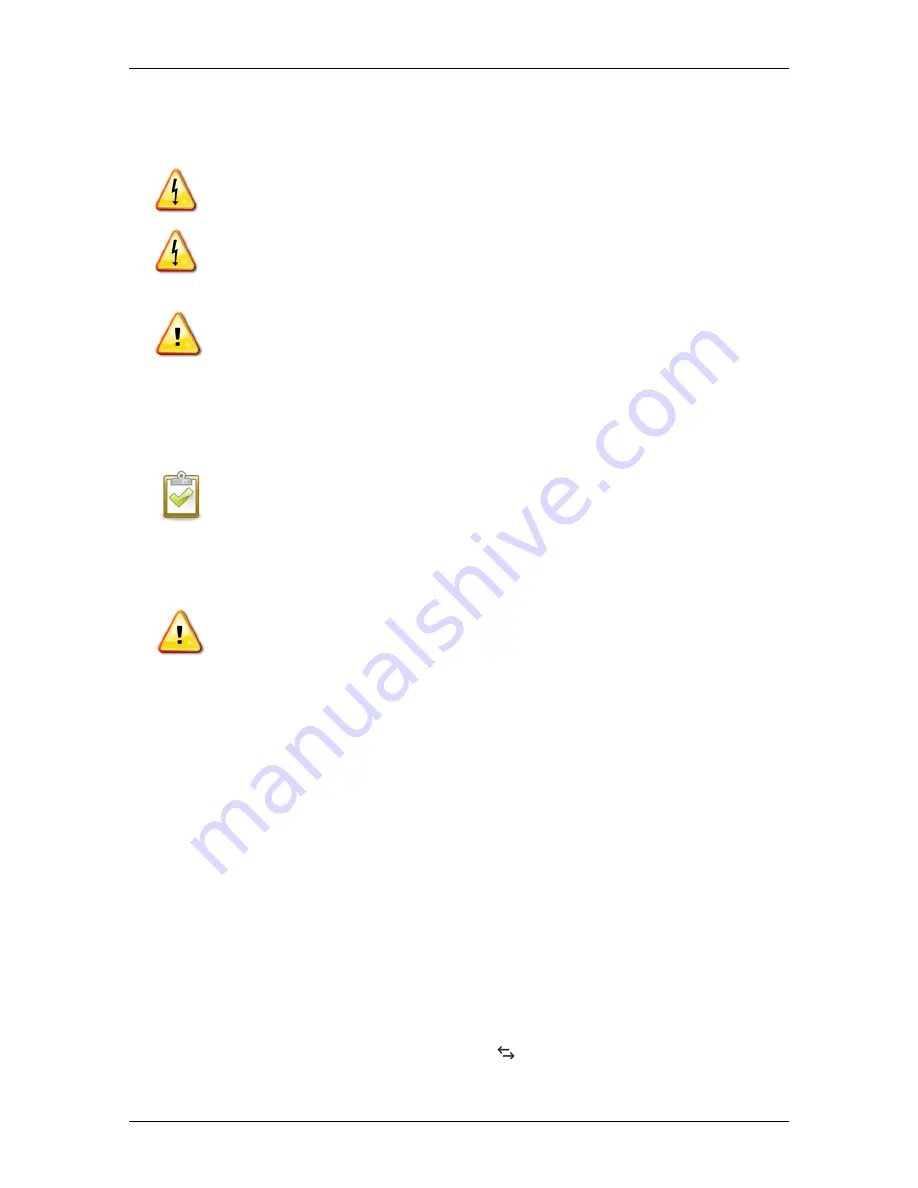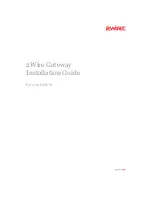
Envoy-S Installation and Operation
2016 Enphase Energy Inc.
141-00031 Rev 01
17
Install the CT for Consumption Metering (optional)
Install one split-core CT to provide consumption metering. Create a protected route with conduit for the
CT wires to the Envoy-S.
DANGER!
Risk of electrocution! CTs must be installed with no current flowing in the sensed
circuit. Always install CT wires in the terminal blocks before energising the sensed circuit.
DANGER!
Risk of electric shock. Be aware that installation of this equipment includes risk of
electric shock. If you wire the Envoy-S at the sub-board, always de-energise the sub-board
before beginning wiring. If it cannot be de-energised, a qualified electrician may safely install
the CT as directed, making sure to connect the leads and then place the CT around the wire
and latch.
WARNING!
Do not install the CT in a panel where they exceed 75% of the wiring space of
any cross-sectional area within the panel, or refer to local standards for guidance.
a.
Make sure that the AC mains wire(s) are de-energised until you have secured the CT wires in the
terminal blocks.
b.
C
onnect the white wire to “IA•” and the blue wire to “IA”.
c.
Clamp the CT on the solar supply Line (active). When the consumption CT is on the line (active)
conductor, the arrow should point toward the load. Unlatch the CT and place Line (active) in
through the opening. Latch the CT and listen for the click as it closes.
NOTE
: Only run active conductors through the CT. The CT can monitor multiple active
conductors.
d.
Tighten the terminal block screws to 0.56 Nm.
Extend Consumption CT Leads, If Needed
If needed, an electrician may extend the leads of the consumption CT using the following guidance:
WARNING!
To extend the CT leads, the electrician must use appropriately rated, 0.75mm
2
to 1.5mm
2
, twisted pair wire and install it
in accordance with all applicable electrical codes.
The electrician may add as much as three ohms round trip resistance to the consumption CT or up to 1.5
ohms per wire. For reference, the following maximum lengths at 75° C by gauge are:
64 meters of 0.75 mm
2
7-strand Cu = 1.5 ohms
85 meters of 1 mm
2
7-strand Cu = 1.5 ohms
128 meters of 1.5 mm
2
7-strand Cu = 1.5 ohms
213 meters of 2.5 mm
2
7-strand Cu = 1.5 ohms
Resistance figures may not be appropriate for all geographies or installation conditions. A qualified
electrician must determine the wire gauge and type to obtain a maximum round trip resistance of three
ohms.
Select wire that is code type and rated for voltage and temperature for the specific application.
Mechanically protect the wires in a code type conduit or raceway. Use certified connectors for splices
and insulated splices from one another and from the raceway, conduit, or junction box, if metallic.
Buried wires must be certified for direct burial and follow the code for installation. Do not bury splices
unless in a certified junction box rated for the application, and use a certified moisture resistant
connection method.
4. Energise the Envoy-S
a.
Close the terminal block door, and secure it with the screw.
b.
Turn on the circuit feeding the Envoy-S.
c.
All four LEDs flash amber during boot up. This typically takes 2 to 3 minutes. When boot up is
complete, the Microinverter Communications LED
flashes amber indicating that that
microinverters are not yet detected.
















































